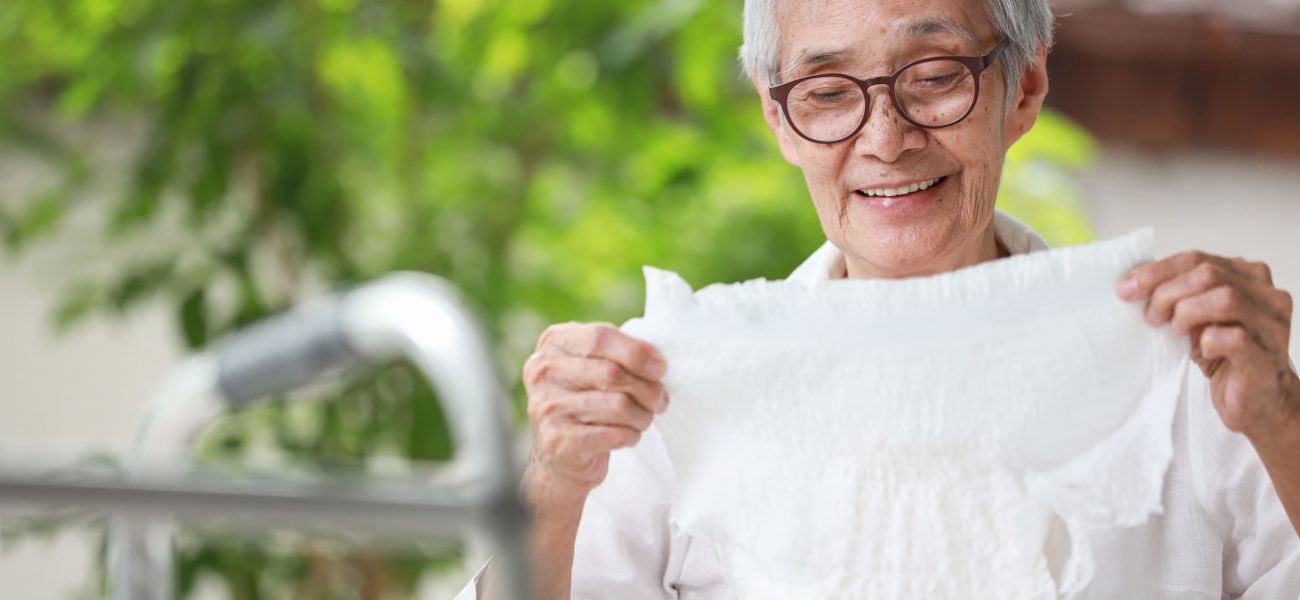Hygiene tips to Follow While Using Adult Diapers
Adult Diapers are great essentials for relieving incontinence stress. They not only add a layer of protection and absorption but also save you from embarrassment and frustration. The elderly going through involuntary bladder leakage can understand the discomfort and demotivation caused while managing incontinence. Therefore, they utilize the best adult diapers for incontinence.
However, maintaining hygiene while using diapers is also essential to leading a healthy life. This blog aims to highlight some effective hygiene practices for Adult Diapers. Let’s have a look:
- First things first, make a habit of changing diapers at regular intervals. For easy time tracking, add reminders to not compromise on health.
- Use a comfortable and efficient absorbent diaper or pants. For instance, Lifree Extra absorb Pants are easy to wear and comfortable with less heaviness. . This helps prevent leakages and supports genetic health. Mention easy self-wear or less heaviness
- The skin is sensitive around pelvic areas, so try to keep it clean as much as possible to keep rashes, irritation, and infection at bay. Wear diapers which come with enough breathing space.
- Another tip to keep in mind is to choose a diaper with stretchable waistbands and leg barrier cuffs. This helps reduce side leakages and ensures dryness.
- Last but not the least, pay heed to the disposing process. The diaper you purchase must include how-to-use and disposal instructions to easily put on, take off and dispose of the diaper. Besides, the general call is to snap and roll the diaper before throwing it in a dustbin.
By integrating some hygienic tips, one can uplift health and immunity to curb more troublesome medical problems. Whereas, by utilizing the best diapers for incontinence, one can be free from the anxiety of staying close to the restrooms, staining the bedsheets or travelling.
Lifree understands the struggle of incontinence patients, therefore offers some of the most reliable products such as Lifree Extra Absorb Pants and Lifree Comfort Standard Pants to suit the different needs of the elderly.
FAQ’s
2. How often should adult diapers be changed to maintain hygiene?
Adult diapers should be changed regularly to maintain hygiene and skin health. On average, a diaper should be changed every 4 to 6 hours, or as soon as it becomes wet or soiled. Leaving a used diaper on for too long can cause the skin to become damp, increasing the risk of irritation or infection. If the person wears diapers overnight, a high-absorbency night diaper can help reduce the number of changes needed but should still be checked in the morning. People with sensitive skin may require more frequent changes. It’s also important to clean and dry the skin properly before putting on a new diaper. Using a barrier cream or powder can help prevent skin damage. Setting a schedule or reminder for diaper changes can make it easier for caregivers to maintain regular hygiene.
3. What steps should be followed during an adult diaper change?
During an adult diaper change, follow these steps for proper hygiene: First, gather all supplies such as clean diapers, wipes or washcloths, gloves, disposal bags, and creams. Wash your hands before starting. If the wearer can’t stand, gently help them lie on their side or back. Carefully remove the used diaper and fold it inward to avoid leaks. Clean the area thoroughly using gentle wipes or warm water with a cloth. Ensure the skin is fully dry before applying any cream or powder if needed. Then, place the new diaper securely, making sure it fits comfortably—not too tight or loose. Dispose of the used diaper properly in a covered bin or diaper bag. Finally, wash your hands again after the change. These steps help reduce the risk of skin problems and maintain cleanliness for both the wearer and caregiver.
4. What kind of wipes or cleansers should be used for cleaning the skin?
It is best to use soft, alcohol-free, and unscented wipes or mild cleansers to clean the skin during a diaper change. Harsh wipes can cause burning or irritation, especially when the skin is already sensitive. Wet wipes specifically made for adult hygiene or baby wipes are ideal as they are gentle on the skin. If using water, make sure it's warm and the cloth is clean and soft. Avoid using soaps with strong fragrances or chemicals, as they may dry out the skin. After cleaning, pat the area dry with a towel instead of rubbing. Keeping the area clean and dry helps prevent rashes or infections. In cases where the skin looks red or irritated, using a soothing cream approved by a doctor can be helpful. Always ensure hygiene products are safe for sensitive skin types.
5. How can caregivers maintain hygiene while changing adult diapers?
Caregivers play a key role in maintaining hygiene during diaper changes. To begin, they should wash their hands before and after each change and wear disposable gloves if available. This reduces the spread of germs. Keep all necessary supplies like clean diapers, wipes, and creams close by to avoid unnecessary movement. Carefully remove the soiled diaper and dispose of it in a sealed bag. Gently clean the person’s skin using soft, non-irritating wipes or a clean damp cloth. Pat the area dry before applying a new diaper. Make sure the new diaper fits properly to avoid leaks or friction. Caregivers should also look for any signs of redness, rash, or skin damage and report it if needed. Following these hygiene steps consistently keeps both the wearer and caregiver safe from infections and discomfort.
6. What are the signs of poor hygiene in adult diaper use?
Signs of poor hygiene in adult diaper use can include skin irritation, redness, bad odor, and the presence of rashes or sores. If the diaper area remains wet for too long, the skin may become soft and painful. It can also develop pressure marks or breakouts. A strong, unpleasant smell may suggest that the diaper hasn’t been changed on time or that the area wasn't cleaned properly. Infections can lead to itching or discomfort, which the person may express by showing signs of distress or trying to remove the diaper. Sometimes, dark patches or swelling may also be seen. These signs indicate that hygiene practices may need improvement. To avoid such issues, it is important to change diapers regularly, clean the area gently but thoroughly, and keep the skin dry and protected using recommended creams.
7. How can you prevent diaper rashes during adult diaper use?
To prevent diaper rashes, change diapers frequently and clean the skin well during every change. Use soft wipes or warm water to gently clean the area and make sure it's dry before putting on a new diaper. Moisture left on the skin can cause irritation. Avoid using harsh soaps or products with strong smells. Applying a light layer of protective cream or powder helps keep the skin safe from friction and dampness. Choosing the correct size and type of diaper also matters. A good-fitting diaper will not rub the skin or allow leaks. Breathable diapers made of soft material are better for reducing the chances of rashes. If a rash appears, it's important to let the skin breathe for a while and consult a doctor if it doesn’t go away in a day or two.
8. Why is proper diaper disposal important for hygiene?
Proper diaper disposal is important for hygiene because it prevents the spread of germs, reduces foul smell, and keeps the environment clean. A used diaper contains waste that should be handled carefully. It should be rolled up tightly, sealed in a disposal bag, and placed in a closed dustbin. Leaving it out in the open or throwing it in regular garbage without sealing can attract flies or insects. This creates an unhealthy atmosphere for everyone in the house. It’s also important to wash hands after handling used diapers. Some people use special bins for diaper disposal that have lids and odor-lock systems. These steps ensure that both the caregiver and the person using the diaper stay healthy. If the caregiver is outside the home, they should carry disposal bags to handle used diapers properly.
9. What types of adult diapers are easier to maintain in terms of hygiene?
Pant-style adult diapers are often easier to maintain for people who are mobile and can manage their own hygiene. These can be pulled up and down like underwear, making them simple to use and change. For people who need caregiver support or stay in bed for long hours, tape-style diapers are better. These allow easy removal and application while lying down. Regardless of the type, it is important that the diaper has a good absorbency level, leak protection, and breathable material. Some diapers also come with wetness indicators, which help caregivers know when it’s time to change. This avoids overuse and keeps hygiene in check. Choosing the right size and type for the individual’s lifestyle helps reduce the chances of leaks, rashes, and discomfort, all while making hygiene easier to manage.
10. Can wearing adult diapers affect a person’s confidence or routine? How can hygiene help?
Yes, wearing adult diapers may affect a person’s confidence, especially in the beginning. They may feel shy, embarrassed, or afraid of leaks and odors in public. However, following good hygiene practices can reduce these worries. Regular changing, proper cleaning, and using the right products help the person feel fresh and safe throughout the day. Choosing diapers with odor control and good fit also boosts confidence. Encouraging the person to keep a change kit when going out can be helpful. Hygiene helps them feel clean, which improves comfort and mental peace. When the skin is healthy and the diaper stays in place without leaks, people are more likely to take part in daily routines and social life. Caregivers should also offer emotional support, making the person feel cared for and respected.






















